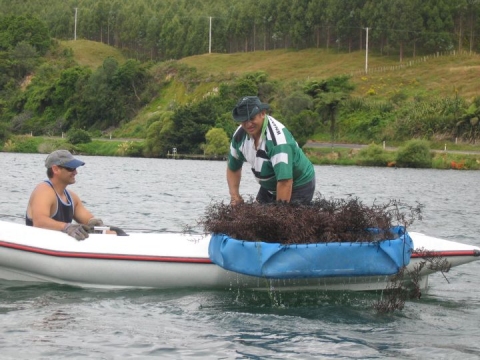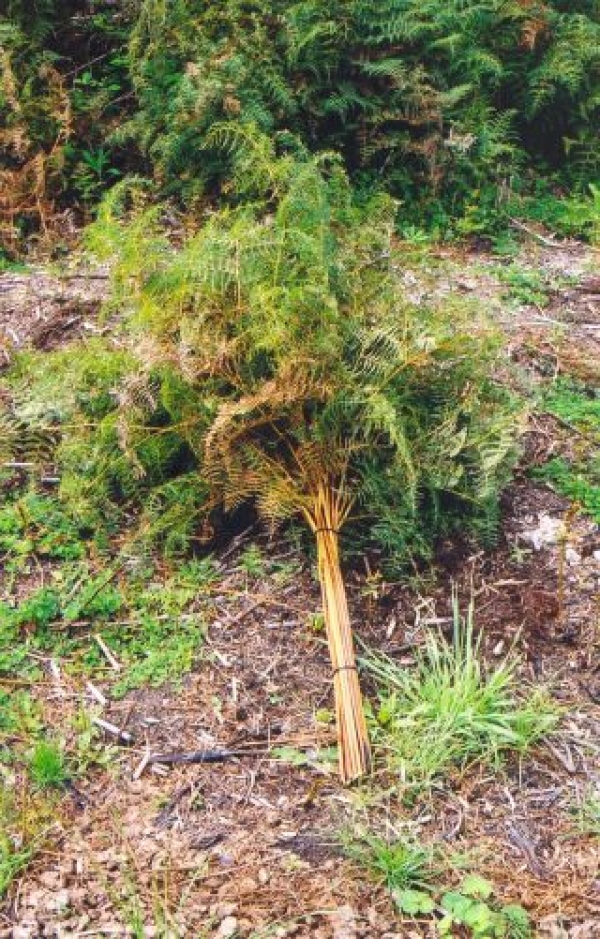A traditional Maori method of catching koura (freshwater crayfish) using a ‘tau koura’, or fern bundle, has worked well in koura abundance monitoring trials.
The tau koura is a traditional method used by Te Arawa and Ngati Tuwharetoa to catch koura in Central North Island lakes. The technique involves placing bundles of bracken fern (Pteridium esculentum) on the lakebed that koura then colonise.
New research carried out by independent consultants and NIWA at Lake Rotoiti shows that tau koura had significant advantages over conventional monitoring methods such as baited traps and dive surveys.
Problems with conventional koura sampling and monitoring methods
Conventional sampling methods – baited traps, scuba diving, and underwater video camera –were all found to have a number of disadvantages in a preliminary study of koura sampling methods in the Rotorua lakes.
Trapping
- mainly attracted large koura
- koura attracted to the traps only if natural food supplies limited.
Diving and underwater video cameras
- also biased towards large koura
- heavily dependent on water visibility.
Advantages of tau koura
Tau koura:
- captured a large number of koura of a wide range of sizes, in both shallow and deep waters
- male and female crayfish of all sizes colonised the fern bundles
- can be used in murky waters and at any depth
- does not require specialised knowledge or expensive equipment.
So tau koura appears to provide more representative data on population structures than alternatives. Tau koura could be especially useful for monitoring by iwi and community groups, and in difficult conditions.
Environments where any koura monitoring is difficult
The tau koura method cannot be effectively used in high-growing aquatic plant beds, or areas of large boulders or wood. The fern bundles become entangled and difficult to retrieve.
But using baited traps, diving, and underwater video camera surveys are all difficult in these types of environments.

Retrieving used tau koura (Chris Hickey)
Monitoring by local iwi and community groups
Te Arawa Lakes Trust consultant Ian Kusabs, who has worked with NIWA on this project, says there are large numbers of koura living in North Island lakes.
“Koura are an important traditional food source for Maori. Maori are reasserting their kaitiakitanga (sustainable protection of resources), and it is important that iwi can monitor the wellbeing of species such as koura.
“There is a lack of quantitative information on koura, which makes it hard for iwi and government agencies to manage the koura populations in the lakes. The main reason for this lack of information is the lack of suitable methods to sample populations. That is why we need a more appropriate method.
“The tau koura method is particularly suited for use by iwi, who have exclusive rights to harvest koura in the Rotorua and Taupo lakes, and community groups. It is inexpensive, does not require specialist expertise, and avoids safety issues associated with diving.”
Further work is planned to investigate how quickly koura colonise the fern bundles and the effects of lake water quality and different sorts of lakebeds and plants on koura populations.
Contact: Ian Kusabs ([email protected])
Full paper – New Zealand Journal of Freshwater and Marine Research 43 (3)

